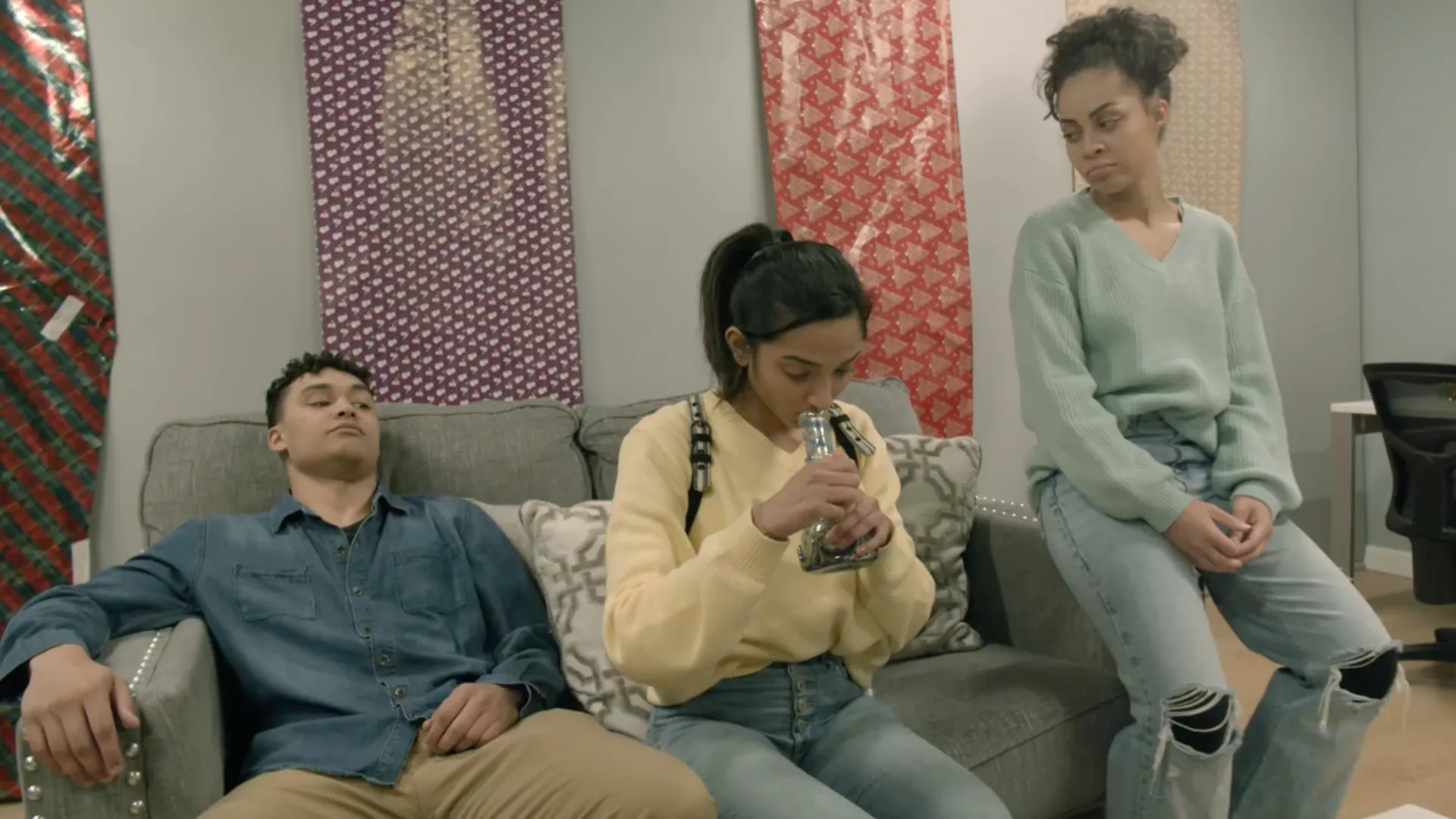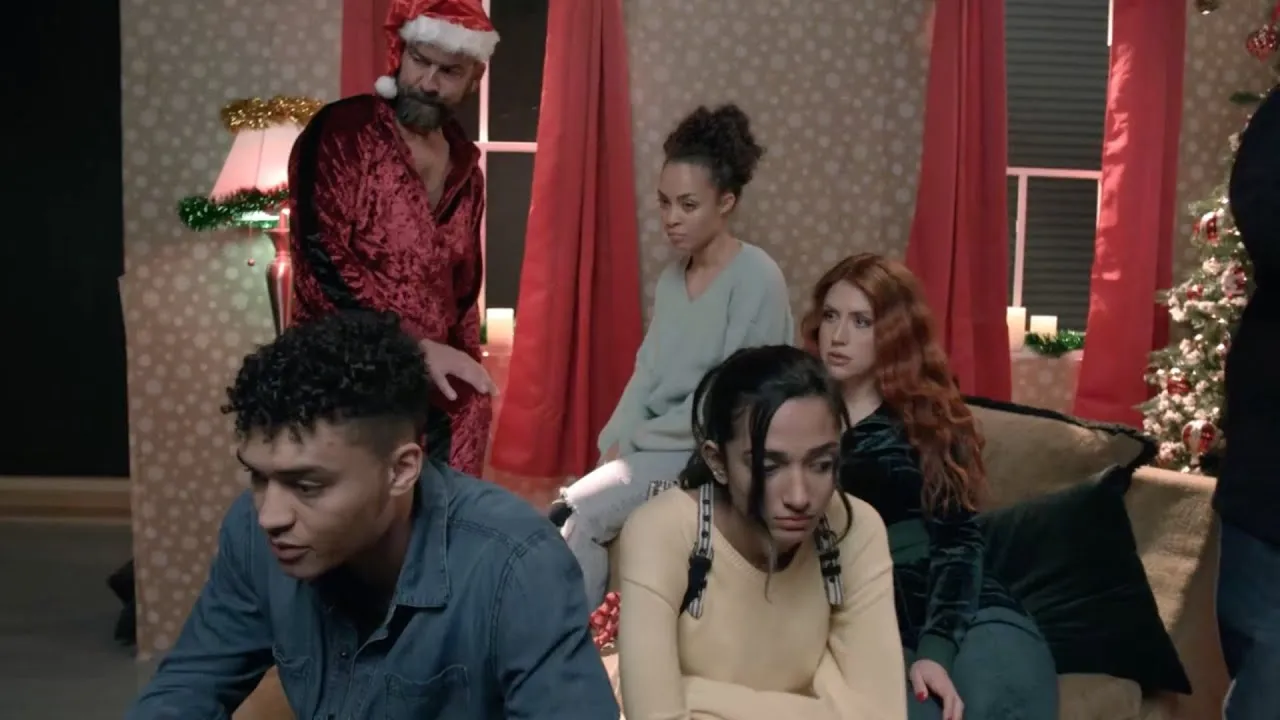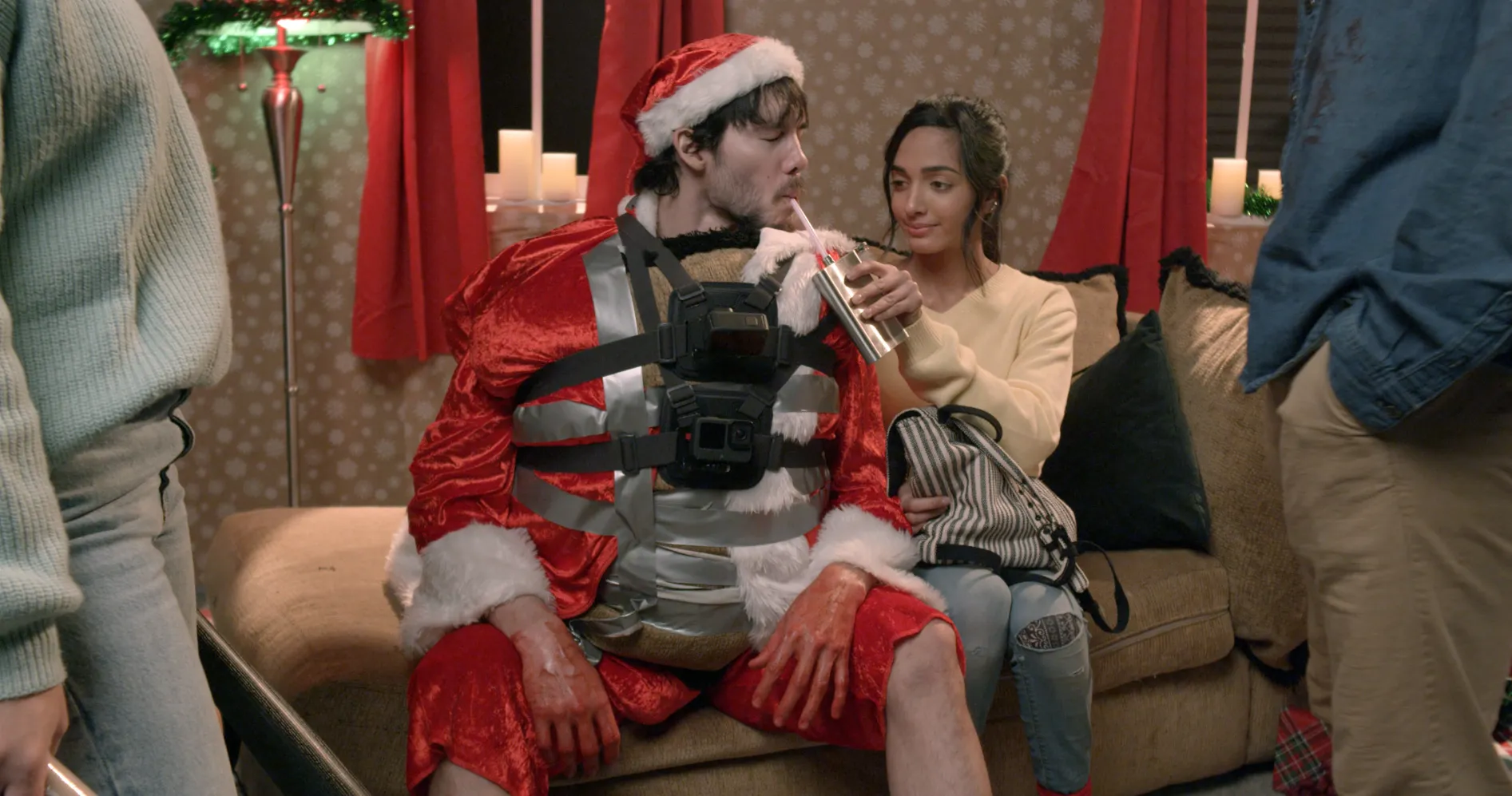The film unfolds on a single sound stage where an adult film with a festive twist is in production, setting an unconventional scene for chaos. A remarkable discovery of a potent marijuana strain, which grants a peculiar form of immunity against the undead, serves as the catalyst for the narrative. This unforeseen element transforms the space into a crucible where survival hinges on an absurd twist of fate.
The storyline charts a rapid descent from mundane rehearsals into a frantic struggle as a sudden zombie outbreak traps the eclectic group inside the studio. The tension builds with a deliberate pace that mirrors the unpredictable progression of the crisis.
Moments of reflective calm give way to a series of jarring shifts as the narrative staggers between disparate scenarios. The film interlaces the professional ambitions of budding filmmakers with the surreal threat of the reanimated dead, generating a collage of intertwined plot threads.
Some subplots appear disjointed, creating intermittent disruptions in the unfolding drama. The titular strain, while seemingly a mere plot device, emerges as a symbol of the tension between control and chaos, imbuing the narrative with an unmistakable, if disordered, energy.
Discordant Ensemble in a Confined World
The film presents a cast whose varied ambitions and fragile dispositions mirror the tumult of their confined surroundings. Nate emerges as the leading figure by circumstance rather than by craft, his character a reluctant focal point amid a cast of misfits.
His screen presence is marked by an absence of depth, leaving his motivations unpolished and his potential unfulfilled. In contrast, Charlie juggles the pressures of managing a sound stage while chasing the promise of cinematic glory. His role is layered with the tension of inherited responsibility and self-imposed ambition, a balancing act that serves as a subtle counterpoint to Nate’s uncertainty.
Zoe’s character, perpetually enveloped in a haze, injects moments of levity that underscore the absurdity of their plight. Her recurring state, while comical, introduces a fragility in survival that speaks to the unpredictable nature of their predicament.
The supporting cast—featuring figures like Aaliyah and Autumn—forms a motley crew whose interactions are as sporadic as they are charged with fleeting insight. Their collective narrative lacks a singular heroic trajectory, resulting in an interplay of conflicting agendas and fleeting alliances.
A noticeable shortfall lies in the character arcs, which rarely venture beyond superficial interactions. Occasional sparks of depth surface amid the ensemble, yet these instances are transient, leaving a residue of what might have been a more resonant exploration of human frailty.
The acting varies considerably: some performances capture a raw, unrefined authenticity, while others stumble into stiffness or exaggerated theatrics. This disparity in delivery injects a rhythmic discord that simultaneously energizes and unsettles the overall tone.
The interactions among these characters reveal a microcosm of clashing ambitions and ephemeral camaraderie. Their exchanges, marked by sharp retorts and awkward silences, articulate a vivid picture of individuals thrown together under extraordinary pressure, each contributing to an atmosphere thick with tension and the unexpected poetry of disarray.
A Study in Raw Vision and Constrained Craft
Michael Seabolt approaches his inaugural directorial effort with a striking mixture of ambition and ingenuity. His methods reveal an acute awareness of the limits imposed by a modest budget, channeling these restrictions into a deliberate tonal quality that permeates the film.
The film’s atmosphere is shaped by Seabolt’s insistence on embracing the raw, unpolished energy of a small-scale production, setting a stage where imperfection becomes an integral aspect of the viewing experience.
The film employs a found-footage, pseudo-documentary style that is both restless and unyielding. Extended takes intermingle with abrupt, jerky pans and a camera that betrays its lack of stability, creating a visual rhythm that mirrors the unpredictable chaos of the narrative. This approach transforms the act of watching into an experience that is as disorienting as it is immersive, inviting the viewer to participate in the immediacy of each unsteady frame.
The production design reinforces the film’s thematic concerns, centering on a low-budget sound stage that doubles as an adult film set. The confined space conveys a palpable sense of entrapment, as the studio’s dual functions—serving both as a production hub and a survival zone—infuse the environment with a distinct, off-kilter charm. Elements of the set exude a raw, almost tangible quality, emphasizing the limitations under which the film was conceived.
Technical choices reflect the financial constraints, with noticeable challenges in camera stabilization and lighting that produce an almost tactile atmosphere of imperfection. The constrained resources guide creative decisions, imbuing the production with a certain rough-hewn character that stands as a deliberate artistic choice rather than an oversight in craftsmanship.
Wit and Words in a Chaotic Narrative
Gregory M. Schroeder’s script constructs a framework that shifts between moments of clear purpose and episodes where the narrative loses its grip. The sequence of scenes sometimes carries excess material that disrupts the flow, creating pockets of tension amid an otherwise steady progression.
The arrangement of events attempts to bind distinct plot threads together, yet the order occasionally falls apart, inviting scrutiny of a method that prizes raw spontaneity over precision.
The dialogue is crafted as a driving force, its cadence revealing the subtleties of each character. Some exchanges spark with a crisp humor that cuts through the grim setting, offering bursts of levity during the zombie crisis. Certain quips sparkle with a clever touch, standing out as moments of unexpected brilliance.
However, a number of lines come off as awkward or overly staged, muting the intended impact of pivotal revelations. There exists a mix of witty retorts and clumsy verbal exchanges that sometimes obscure the intended clarity of character interactions.
Comedy in this work emerges through an array of stoner jokes and a darker style of humor that counterbalances the tension of impending doom. The incorporation of lowbrow humor with sardonic one-liners creates a peculiar tone that vacillates between genuine amusement and poorly timed banter.
This fluctuation in mood introduces a sense of unpredictability, as the film shifts abruptly from earnest moments to displays of forced levity, thereby questioning the overall coherence of its comedic ambition.
Discordant Harmony in Chaos
The film oscillates between grim reanimation and a cavalier sense of humor that draws heavily on contemporary stoner culture. Its zombie elements serve as a dramatic backdrop, their menace interlaced with moments of offhand wit that reflect a spirit of youthful irreverence. Marijuana emerges as a quasi-magic elixir, a plot device that both conceals and reveals, symbolizing an attitude of defiant escapism amid adversity.
A pronounced tension arises from the collision of horror and humor. Certain scenes, steeped in the dread of a decaying world, are unexpectedly punctuated by irreverent quips that undercut the gravity of impending disaster.
In other instances, the narrative surrenders to absurdity, with abrupt tonal shifts that fracture the continuity of the experience. This capricious interplay challenges conventional expectations of genre fidelity, provoking a reconsideration of how terror and levity might coexist in a single frame.
The film’s tonal oscillations do more than merely entertain; they spark a reflection on modern approaches to crisis. The juxtaposition of catastrophic stakes with darkly comic interludes questions established norms of storytelling, offering a commentary on how humor can serve as a vital mechanism for confronting fear.
In this context, the portrayal of a world undone by both decay and debauchery becomes a subtle mirror for contemporary attitudes toward risk and responsibility, inviting a discourse on the resilient defiance that emerges when structure falters.
Unorthodox Impact and Engaged Audiences
The film orchestrates a fusion of off-kilter narrative twists, vividly drawn characters, and an unpredictable humor that challenges expectations. Its narrative structure, though unrefined in parts, coalesces into an experience that is absorbing in its raw ambition.
The idiosyncratic interplay of unsettling tension and irreverent comedy pulls viewers into an environment where chaos and wit intermingle with a palpable sense of creative defiance. This defiance of formulaic storytelling produces an experience that captivates those who favor subversive takes on familiar genre tropes.
Audience engagement is propelled by the film’s commitment to unconventional storytelling. It attracts aficionados of zombie comedies and low-budget indie fare—viewers who find appeal in narratives that shun polished conventionality for a more experimental and unpredictable presentation.
The film’s humor, rooted in a contemporary stoner sensibility, punctuates scenes of dread with audacious quips, offering moments of levity amid grim proceedings. Its cast, whose performances range from raw sincerity to overzealous dramatics, further enrich the texture of this cinematic experiment.
The production’s gritty aesthetic and deliberate imperfections evoke a spirit of rebellious creativity that invites repeated viewings. Moments of improvisation and a palpable tension that arises from technical constraints create a compelling dynamism.
Viewers drawn to film school experiments and those who revel in unconventional approaches to narrative will likely find this production a curious case study in resourceful storytelling. For those seeking a standard zombie spectacle or a tightly orchestrated plot, this film sets different expectations, favoring offbeat humor and a willingness to challenge genre norms.
The Review
Zombie Strain
Bold in ambition yet flawed in execution, this film carves a niche within indie zombie comedies. Its inventive approach and offbeat humor offer an engaging spectacle for those drawn to unorthodox storytelling, even as technical lapses and a fragmented narrative temper its impact.
PROS
- Unique mix of humor and horror
CONS
- Fragmented narrative structure
- Inconsistent acting quality
- Underdeveloped character arcs




















































